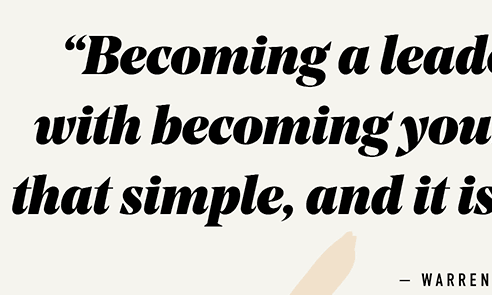Adobe Garamond Pro Bold Google Fonts
- Adobe Garamond Pro Bold Google Fonts Downloads
- Adobe Garamond Free Font
- Adobe Garamond Pro Bold Italic
Last week, we talked about. I talked about fonts a little bit, but this week I’d like to discuss fonts for print books in detail. Fonts establish a tone and style for a print book, and deserve careful attention. For the most part, fonts fall into some broad categories:. Serif – Serif fonts have small lines trailing from the edges of letters and symbols – think Times New Roman. Sans-serif – Sans-serif fonts don’t have these lines – think Arial. Script – More like a handwritten cursive font – think Lucida.
The OpenType version of the font family was released in 2000 as Adobe Garamond Pro, with enhanced support for its alternate glyphs such as ligatures, small caps and italic swash capitals, and is sold through Adobe's Typekit system. It is one of the most popular versions of Garamond in books and fine printing.
Monospace – More like a typewritten or computer font – think Typewriter Main text fonts Serif fonts win in overall readability versus sans-serif in main print copy. (Sans-serif is recommended for web copy.) Some great serif fonts come pre-packaged with Adobe products. My favorites are:. Adobe Garamond Pro (my personal favorite by far) – this is a beautiful, compact font. I use it most often, to get a more conservative page count.
Exposure 7 download. Manipulate focus just like fast expensive lenses with Bokeh, Alien Skin's lens simulator Photoshop plug-in.
Adobe Caslon Pro – second choice after Garamond for main text. It has a slightly larger, rounder footprint than Garamond, so it’s a great choice if you want to increase a manuscript’s page count.

Adobe Garamond Pro Bold Google Fonts Downloads
Minion Pro – another great, airier font choice. This is also InDesign’s default font. Perpetua – a notable departure from Adobe’s lineup of beautiful, readable fonts, Perpetua is another great main text choice. Don’t use Times New Roman or Times (Mac). With so many beautiful fonts to choose from, why just pick the one that is in the manuscript?
I think the only time I would ever use Times is if the author insisted, and I’d probably would try to talk them out of it first. Times is not a very conservative font space-wise. You’re going to end up with a higher page count if you use it. If you want a higher page count, I’d recommend Caslon or Minion Pro. Don’t use Calibri, Word’s main text default font.
It just feels like lazy design. Pick a font that’s better for print and that complements the style and tone of the book. Header fonts Chapter headers and subheads can be used to tie the book cover design into the interior design, although this is not a requirement. Headers can be serif, sans-serif, or script, depending on the effect desired.
Some of my favorites are:. Trajan Pro – Another excellent font from Adobe. It’s great for chapter headers, and also a phenomenal font for book covers. You’ve seen this one everywhere. Now that I’ve mentioned it to you, you’ll see it even more.
Myriad Pro – An Adobe font, and a great alternative to Helvetica (which can be expensive). A sans-serif font, Myriad Pro comes in several different styles so you have tons of choices on how to use it. You could even use Myriad Pro in 1 style for a subhead, then a sub-subhead could be a different style of Myriad Pro. League Gothic – A great font for text you want people to notice. I’ve seen this one used many times for the author’s name on book covers. Bitter and Bitter Bold – I’ve used these with great effect in textbooks. It’s a fun font, and can be playful next to more serious fonts like Minion Pro.
Subheads can also be your main font, but in italics, bold, or bold italics. If appropriate, script fonts can be combined with other font types. Favorites include. Allura – I’ve used this sparingly to set off chapter numbers. It’s a beautiful script font that also happens to be easy to read. Alex Brush – another script font that’s fairly easy to find.
(Did it come pre-installed with Windows? IDK.). Stephanie Marie – more edgy than the others – use sparingly.
Please don’t use handwritten fonts like Comic Sans. There are so many other better choices Callout Fonts Callouts are also known as textboxes, sidebars, etc.
They’re the text that’s separated from the main text, usually by text decorations, boxes, lines, and/or different fonts. This is a great place to use your sans-serif fonts. Choices might include:. Gill Sans – Nice. Your main text, in a different style, like italics, bold, or bold italics. This is what I do the most often.
Font Websites There are many reputable free font websites out there. One of my favorites is. They offer free commercial fonts, with some great fonts to choose from. You can also purchase fonts for use in print. One nice thing about purchasing a font is that you know for sure it will work.

Adobe Garamond Free Font
Once I used a free font from the Google Fonts directory and it looked great when I exported it to PDF. Once it got to the printer, though, it didn’t properly show the letter d. No one knew until the book was actually printed. Issues like this are few and far between, but when you purchase a font you can be pretty sure it will work properly. So, what do you think? Have some favorite fonts for print book publishing that I didn’t mention here?
Adobe Garamond Pro Bold Italic
How about joining the conversation on?